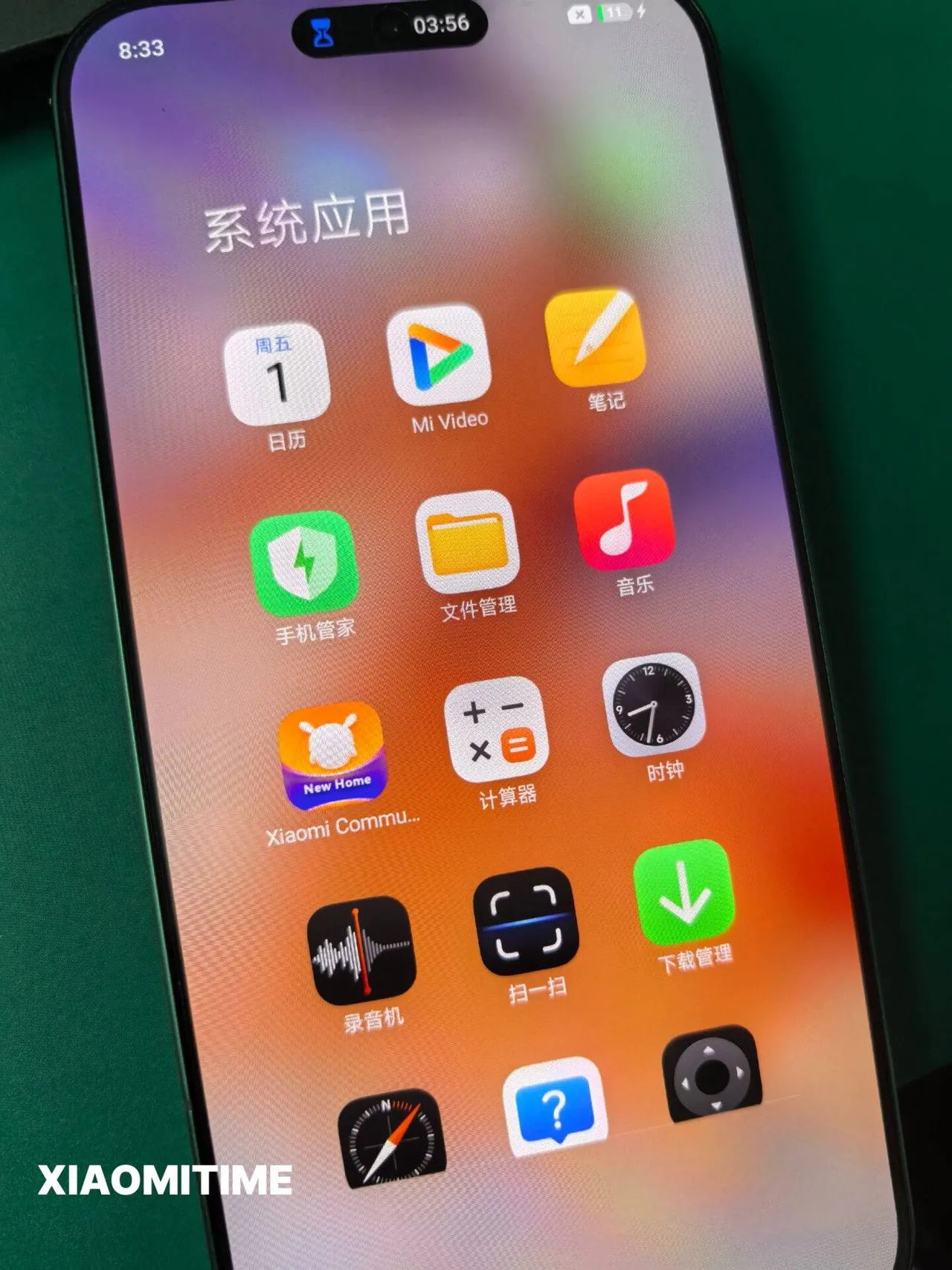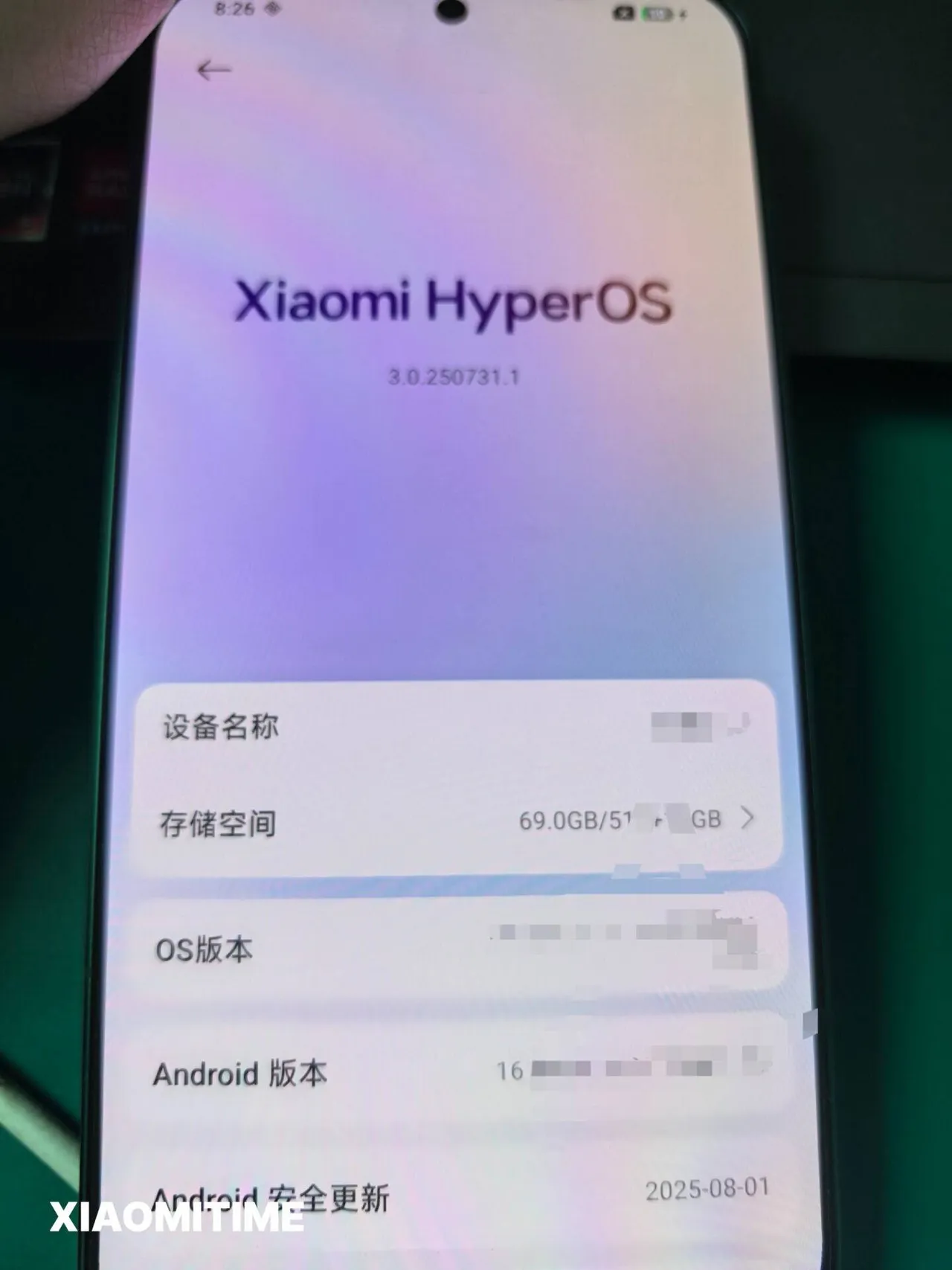Xiaomi 16 render
Design Tweaks, Interface Overhauls

HyperOS 3 screenshot
One of the more eye-catching features being tested resembles Apple’s Dynamic Island. Except Xiaomi is trying to make it its own. Instead of wasting space around the punch-hole, they’re reportedly filling it with adaptive, pill-shaped notifications. Small animations, live info, contextual updates. It’s an elegant way of reclaiming screen real estate while adding flair. It’s not exactly groundbreaking, yes. However I think many Android users will appreciate the subtle boost in usability.
The truth is, details about the Xiaomi 16’s broader design are still thin. The company seems keen on retaining the familiar look of its predecessors while tightening up performance and efficiency. That’s a conservative but probably wise approach, especially given how much emphasis is being placed on software this time.
HyperOS 3: A Faster Rollout Than Expected

Leaked HyperOS 3 screenshot
Why the hurry? One explanation is Android 16. Its early arrival gave Xiaomi a head start, which in turn accelerated HyperOS development. This means international users won’t have to wait nearly as long as usual to get their hands on the update. For a company that has often staggered rollouts across months, this is a welcome shift.
Of course, early doesn’t always mean flawless. Rapid launches tend to come with their own quirks. Bugs, compatibility hiccups, patches pushed out weeks later. But if Xiaomi manages to keep that under control, it could earn them a lot of goodwill, particularly among users who are tired of feeling like second-class citizens compared to Chinese buyers.
The Standard Xiaomi 16: What We Know So Far
- Display size expected between 6.32 and 6.36 inches
- A battery capacity jump to 6800mAh (that’s huge for a phone in this range)
- 100W fast charging, keeping Xiaomi ahead of most rivals
- Performance optimizations that, while vague, suggest smoother multitasking and better thermal management
That battery stands out. A nearly 7000mAh pack, paired with 100W charging, feels like overkill. The kind of overkill that users will welcome. In a market where most flagship phones still hover around 4500–5000mAh, Xiaomi seems intent on giving endurance a headline role.

It raises a question, though: will the extra heft compromise design elegance? We don’t know yet. But based on Xiaomi’s recent track record, they’ll try to strike a balance.
Final Thoughts
It’s always tricky to predict how much of the early hype will actually carry through once a phone lands in people’s hands. Xiaomi has been in this position before. Ambitious claims, bold teasers, and then a mixed reaction depending on how well the execution lined up with expectations. What feels different this time is the timing. By tying the Xiaomi 16 series so closely to HyperOS 3 and Android 16, the company is clearly signaling that it doesn’t want to just follow trends; it wants to frame them.
So, the question isn’t really whether the Xiaomi 16 will be powerful. That much feels certain. The question is whether it will make people pause and think, “This is the moment Xiaomi stopped chasing and started leading.” We’ll find out soon enough.





